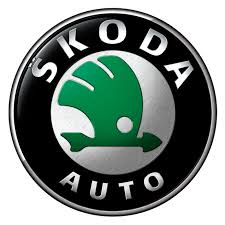Superb
| Cleaning the refrigerant circuit with compressed air and nitrogen |
| In order to remove impurities as well as aged refrigerant oil in a clean refrigerant-saving and environmentally friendly manner, without demanding installation, the refrigerant circuit is flushed out with refrigerant R134a or is blown through with compressed air and nitrogen. |
 Note
Note| Blowing through the refrigerant circuit with compressed air and nitrogen requires considerably more work than flushing with refrigerant R134a. When flushing with refrigerant R134a, the cleaning of the components is better and more effective, one should therefore always flush if there is a problem. |
| The refrigerant circuit or the individual components must be blown through first with compressed air and then with nitrogen, if: | ||||||||||||||||
|
| Blowing through the refrigerant circuit |
 WARNING
WARNING
|
 Note
Note| t | To ensure neither oil nor moisture is transferred from the compressed-air system into the refrigerant circuit, the compressed air must be led through a compressed-air cleaning system for cleaning and drying. For this use a filter and dryer for compressed air (scope of delivery as tool for paint work). |
| t | The maximum working pressure when blowing through must not be greater than 15 bar, (if necessary also use a pressure reducer for compressed air). |
| t | Use a suitable adapter to connect the pressure hose to the refrigerant circuit. |
| t | The adapters must not damage the components of the refrigerant circuit. |
| t | Remove the fluid reservoir with dessicator before blowing through the condenser (if possible). |
| t | The evaporator must be blown through via the low-pressure line connection (large diameter) once the expansion valve or the throttle has been removed. |
| t | Check expansion valve, replace if corroded or dirty. |
| t | If there are dark, sticky deposits in the components that cannot be removed with compressed air, replace these components. |
| t | Thin, light grey deposits on the inside do not hinder the operation of the components. |
| t | Compressed air and nitrogen cannot be blown through the compressor and the expansion valve or the throttle. |
| t | Always blow through the components against the flow direction of the refrigerant. |
| Work procedure | ||||||||||||
|
 Note
Note| t | Draining off the oil from the compressor is only possible through the filling opening, the compressor must therefore be removed. |
| t | Once no more refrigerant oil runs out of the compressor; turn on the compressor by hand and drain off residual oil. |
| Replace the fluid reservoir with dessicator insert whenever the refrigerant circuit has been blown through and keep it closed as long as possible to prevent insofar as possible any humidity from penetrating into the dessicator insert. |
